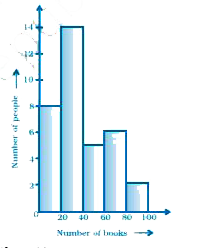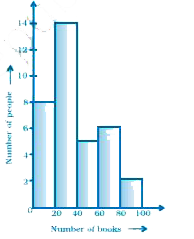The number of telephone conversations by a fibre of band width 40MHz, with much less intensity loss, are:
1800
2000
2200
2400
The correct Answer is:B
To determine the number of telephone conversations that a fiber optic cable with a bandwidth of 40 MHz can support, we can follow these steps:
1. Understand Bandwidth and Data Rate:
- The bandwidth of the fiber is given as 40 MHz. Bandwidth is a measure of the maximum data transfer rate of a network or internet connection.
2. Determine Data Rate:
- For fiber optics, a rough estimate is that each MHz of bandwidth can carry approximately 1 Mbps (megabit per second) of data. Therefore, for a bandwidth of 40 MHz:
Data Rate=40 MHz×1 Mbps/MHz=40 Mbps
3. Calculate the Number of Conversations:
- A typical voice call requires about 64 Kbps (kilobits per second). To find out how many simultaneous calls can be supported by the fiber:
Number of Conversations=Data RateData Rate per Call=40 Mbps64 Kbps
- First, convert 40 Mbps to Kbps:
40 Mbps=40,000 Kbps
- Now, calculate the number of conversations:
Number of Conversations=40,000 Kbps64 Kbps≈625
4. Conclusion:
- Therefore, a fiber optic cable with a bandwidth of 40 MHz can support approximately 625 simultaneous telephone conversations with minimal intensity loss.
Final Answer:
The number of telephone conversations that a fiber with a bandwidth of 40 MHz can carry is approximately 625.
- The bandwidth of the fiber is given as 40 MHz. Bandwidth is a measure of the maximum data transfer rate of a network or internet connection.
- For fiber optics, a rough estimate is that each MHz of bandwidth can carry approximately 1 Mbps (megabit per second) of data. Therefore, for a bandwidth of 40 MHz:
Data Rate=40 MHz×1 Mbps/MHz=40 Mbps
- A typical voice call requires about 64 Kbps (kilobits per second). To find out how many simultaneous calls can be supported by the fiber:
Number of Conversations=Data RateData Rate per Call=40 Mbps64 Kbps
- First, convert 40 Mbps to Kbps:
40 Mbps=40,000 Kbps
- Now, calculate the number of conversations:
Number of Conversations=40,000 Kbps64 Kbps≈625
- Therefore, a fiber optic cable with a bandwidth of 40 MHz can support approximately 625 simultaneous telephone conversations with minimal intensity loss.
The number of telephone conversations that a fiber with a bandwidth of 40 MHz can carry is approximately 625.
Topper's Solved these Questions
- BOOK - FIITJEECHAPTER - SEMICONDUCTOR AND DEVICEEXERCISE - ASSIGNMENT PROBLEMS( objective : Level-II)37videos
SEMICONDUCTOR AND DEVICE
- BOOK - FIITJEECHAPTER - ROTATIONAL MECHANICSEXERCISE - COMPREHENSION - IV2videos
ROTATIONAL MECHANICS
- BOOK - FIITJEECHAPTER - SIMPLE HARMONIC MOTIONEXERCISE - Assignment Problems (Objective) (Level-II)20videos
SIMPLE HARMONIC MOTION
Similar Questions
Knowledge Check
- Question 1 - Select One
The number of telephonic messages which are carried by a fibre at an instant with much less intensity loss are
A2400B2200C2000D1800 - Question 2 - Select One
The number of all prime numbers less than 40 is ..
A15B18C17D12 - Question 3 - Select One
An optical fibre can offer a band width of ________.
A100 MHzB100 GHzC750 MHzD250 MHz
A microwave telephone link operating at the central frequency of 10 GHz has been established. If 2% of this is available for microwave communication channerl and each telephone is alloted a bank width of 8 KHz. the number of telephone channels which cn be simultaneously granted is 2.5×10a. What is the integer value of a?
View SolutionIn young's experiment of double slit, the number of times the intensity of the central bright band greater than the individual intensity of the interfering waves
View SolutionThe number of AM broadcast stations that can be accomodated in a 140kHz band width for the highest modulating frequency 10kHz will be
View SolutionThe number of AM broadcast stations that can be accommodated in a band width of 200 kKz for the highest modulating frequency 10 kHz will be
View SolutionThe number of AM broadcast stations that can be accomodated in a 300kHz band width for the highest modulating frequency 15kHz will be
View Solution



